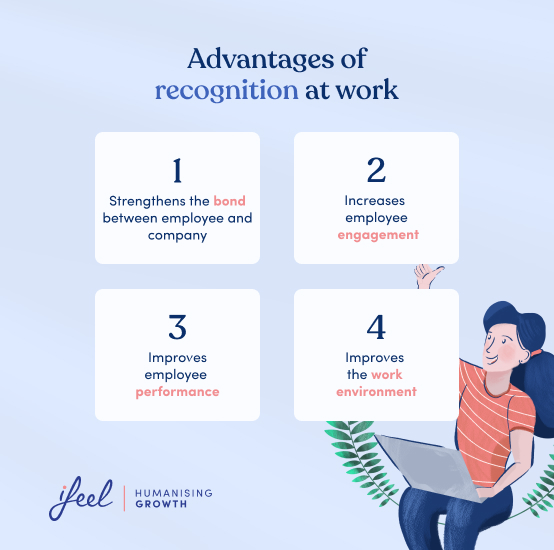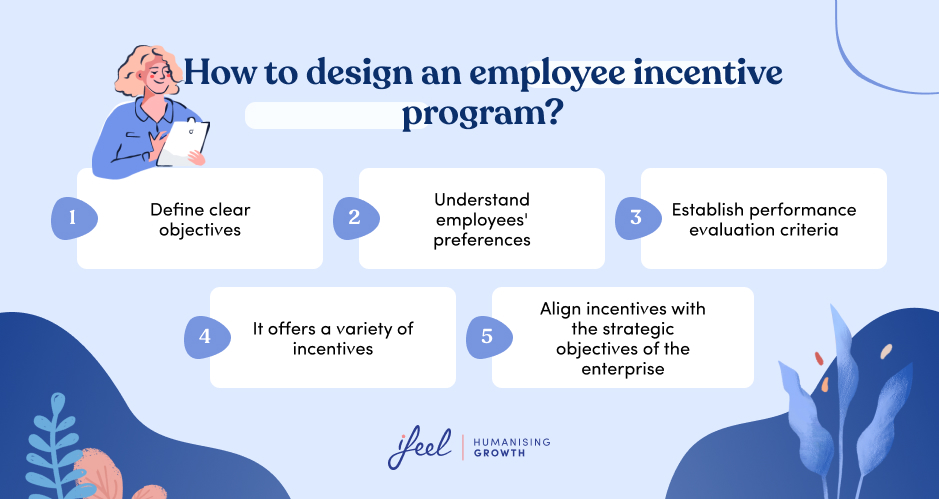Employee incentive programmes have long been a cornerstone in the toolkit of human resources for boosting productivity and enhancing engagement within large enterprises. As organisations grow and evolve, the need to motivate and retain top talent becomes increasingly critical. Employee incentives not only foster motivation and commitment but also significantly contribute to a positive organizational culture that aligns with the strategic goals of the business. This article delves into the depths of employee incentive programmes and their vital role in large enterprises.
What is the best incentive plan for employees?
Improving motivation and work commitment is a complex challenge that requires a strategic approach. It involves tangible actions designed by HR departments and decision-makers who manage the human capital within an organisation. Crafting the best employee incentive programmes is about understanding and aligning with the diverse needs of a large workforce.
What are employee incentive programmes?
One of the most important actions within this corporate policy is the development of staff incentive programs. Employee incentives are part of the general context of rewards received by an employee, which are usually of a monetary nature. They are also part of the scope of flexible compensation, emotional pay, or social benefits available to the company. In other words, employee incentive programmes may not be strictly economic and still be very effective.
In short, no incentive program for employees is a substitute for their basic working conditions, but rather an improvement that benefits both the employee and the company.
Is an incentive for the employee the same as a reward?
Applying the classical theories of human learning to the business world, reinforcement is a reward that is administered to the worker after the execution of a behavior or the achievement of specific objectives. Its purpose is to increase the probability that these results will occur again.
On the other hand, a work incentive is administered prior to attaining these achievements. Its purpose is not so much to reward appropriate behavior or good performance, but to stimulate it when it has not yet occurred so that it will occur in the future. For this reason, staff incentive programs should be understood as a foretaste of future rewards.

What types of work incentives are there?
Since work incentives aim to motivate employee behavior, we can agree that there are as many motivators as there are people. According to a Gallup study, employees who receive great recognition are 20 times more likely to be engaged than employees who receive poor recognition. However, in general terms, they can be grouped into four categories: economic, non-economic, interpersonal, and professional development.
| Type of incentive | Description | Examples |
|---|---|---|
| Economic | Incentives involving direct financial compensation. | Bonuses, Premiums, Salary Advances |
| Non-Economic | Incentives that do not translate directly into money, but rather benefits aimed at work-life balance or time off. | Extra vacation days, Flexible schedule, Mental wellness services |
| Interpersonal | Incentives involving gifts or experiences for leisure activities. | Gifts, Trips, Service vouchers |
| Professional Development | Incentives focused on professional growth. | Training programs, Tuition reimbursement |
Regardless of the type of incentive, a structured and well-planned strategy must be created before implementing any program. This strategy should evaluate the best way to apply the incentives, which types will work better than others, etc., to ensure that the investment is made efficiently.
The idea is to design a strategy where everyone involved knows in advance which specific incentives they will be able to receive, and based on which specific outcomes. In addition, any employee incentive programme must allow for proper evaluation of its results to make any necessary adjustments.
Mental health as an incentive in enterprise organisation
Mental health support is becoming a powerful and increasingly popular employee incentive in today’s workplace. By offering mental health programs such as workshops, tools and therapy, companies demonstrate their commitment to the holistic well-being of their employees. This type of incentive goes beyond traditional financial rewards, addressing the crucial balance between personal and professional life. When employees feel supported mentally and emotionally, they are more likely to be engaged, productive, and loyal to the company.
Quick Assessment for decision makers
For decision-makers, assessing the effectiveness of incentive programs is crucial. Consider these questions:
- How well do your current incentive programs align with employee needs and organizational goals?
- Are there measurable outcomes that reflect improved employee engagement and performance?
- How frequently is feedback from employees about these programs solicited and acted upon?
Why should you have employee incentive programmes?
As we have already established, employee incentive programmes are primarily aimed at increasing company members’ motivation and attachment to the company, conveying to them that the company cares and is concerned about their well-being. One of the final messages to transmit to those who are already part of the company and those who might join the team in the future is that the company is a good place to work.
Therefore, employee incentive programmes are not mere tokens of courtesy, token rewards, or prizes based on a purely ethical component (good behavior deserves to be rewarded or, in this case, incentivised, i.e. promoted or “rewarded in advance”).
Benefits of staff incentive programs
On the contrary, its nature is purely instrumental: good results deserve to be incentivised because this increases the likelihood that they will occur and, moreover, that they will be replicated in the future, either by the same employees who have achieved them now or by others. We’ve outlined the benefits of implementing employee incentive programmes:
- Employee incentive programmes motivate employees and increase their engagement with their work. This leads to higher motivation levels and ultimately has a positive impact on productivity and the company’s overall results.
- These programs also lead to talent retention and a low turnover rate. If a workforce has incentives such as flexible hours and remote work, they are more likely to stay than in a company where they are not offered these perks. Therefore, employee loyalty to the company increases.
- Benefits of employee incentive programmes also include brand reputation and a useful tool in the inbound recruiting strategy implemented by the HR department. We must not forget that advertising the advantages of working for a compan attracts the best workers.
- Incentive programs also help employees reach their objectives. If an employee knows there are incentives if a goal is reached, this will motivate them to do better in order to reach their aim, and ofcourse, the company’s.
What makes good employee incentive programmes?
An incentive program to motivate employees has to be flexible and adaptable to the different profiles present in the team because not just any reward is equally powerful or meaningful for any person.
To optimise this adaptability, the most useful thing to do is not to make it over-complicated, but to ask employees what incentives would be meaningful to them, which will be very valuable information to design the final program.
This way, we increase the likelihood of targeting the employees’ true reward focuses. In addition, we encourage employee participation and influence, increase knowledge about them, and can act more efficiently in administering rewards.
It is also important that your company’s employee incentive programmes do not generate a bad environment but, on the contrary, that it contributes to improving the company’s internal and external reputation by creating a good working environment among colleagues.

How to design employee incentive programmes
1. Define clear objectives
It is a matter of carefully designing what we are going to apply: what the incentive involves, what its real terms are, what it commits to. Let’s not forget that the employee incentive programme has to be easily assessable in its main terms.
2. Evaluate impace
We must consider what effect the work incentive programs may have on the employee in question and on the rest of the workforce. However, if we have previously had good communication with the employees, we will hardly make mistakes at this point.
3. Ensure consistency
It is necessary to think about the extent to which an incentive such as the one to be provided is appropriate: it should not be too much or too little. It is also necessary to think about whether this measure can be generalised to other members of the workforce or whether it is sustainable over time. It is often better to be a little less generous but for a longer period of time or with more people than to make a huge compensation deployment (of rewards and incentives) that will generate a precedent that cannot be maintained in the future.
The Leadership Lens🔎
From a leadership perspective, the strategic implementation of employee incentive programmes is not merely about rewards but about embedding these initiatives into the corporate ethos. Effective leaders recognise that these programs can drive change, foster innovation, and maintain a competitive edge in the global market. Are your leadership strategies aligned with the motivational needs of your workforce?
Trust the leaders
Employee incentive programmes are a key aspect of employee well-being, and HR leaders should prioritise them as part of their people strategy.
To assist in this process, our team of psychologists specialising in mental well-being has developed a mental well-being program for companies aimed at helping companies enhance employee engagement and boost productivity.
This collaboration allows HR managers to receive personalised, data-based advice on the most effective measures for detecting employee mental health issues and assessing the workplace climate. It’s the best way to understand their needs.
Moreover, ifeel’s corporate mental well-being solution offers employees a structured mental health care service tailored to their needs at any given time.
We hope you found this article on employee incentive programmes interesting. If you want more information about our mental well-being solution for companies, simply request it, and we will contact your team soon.







